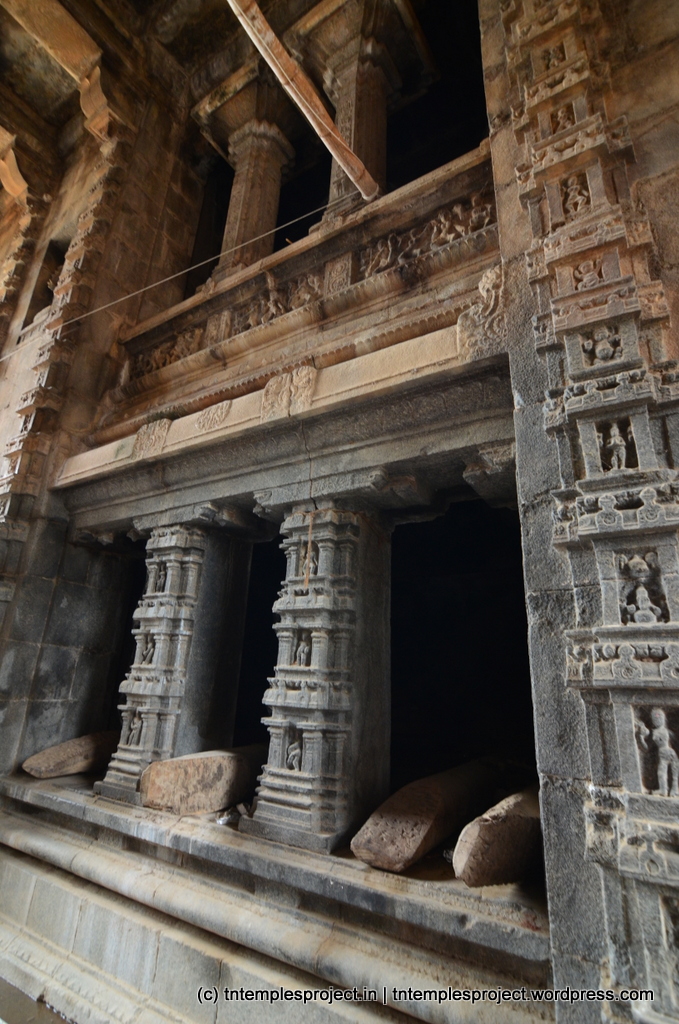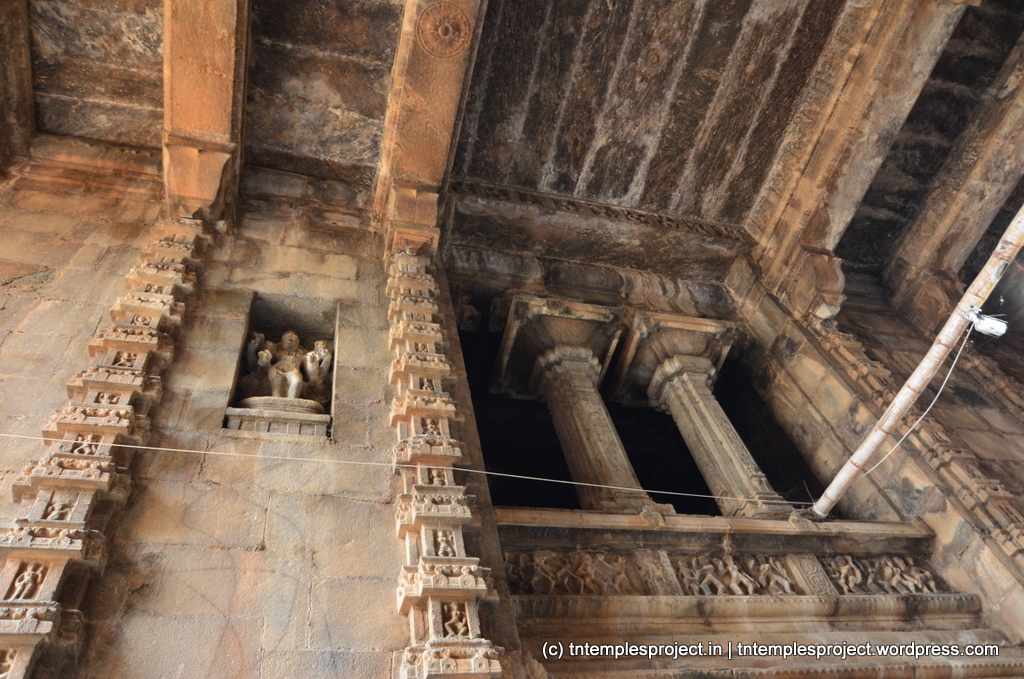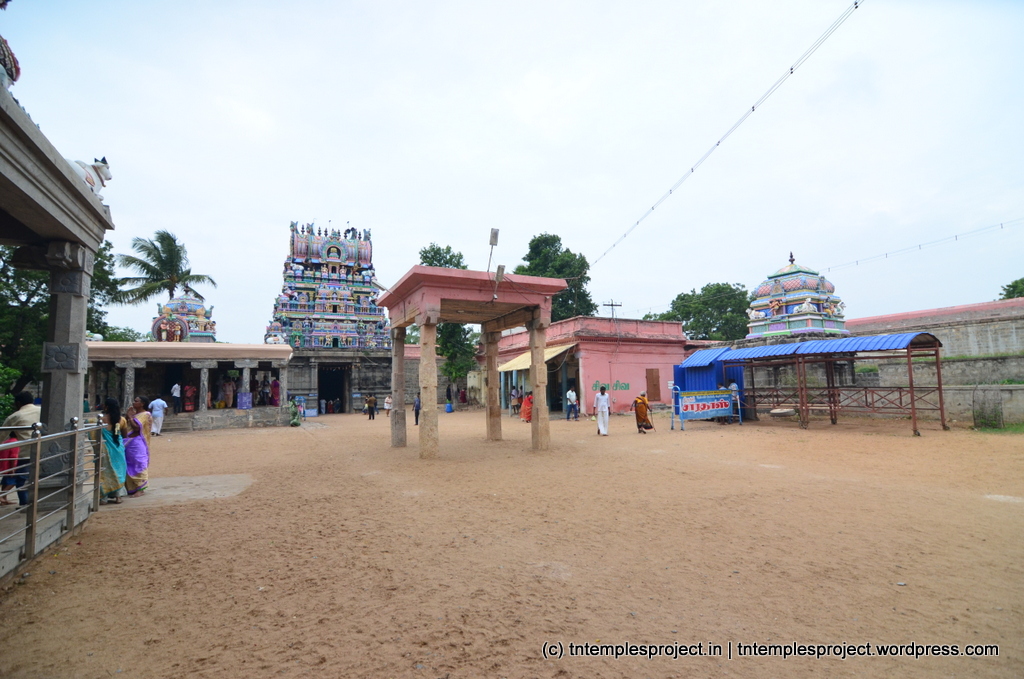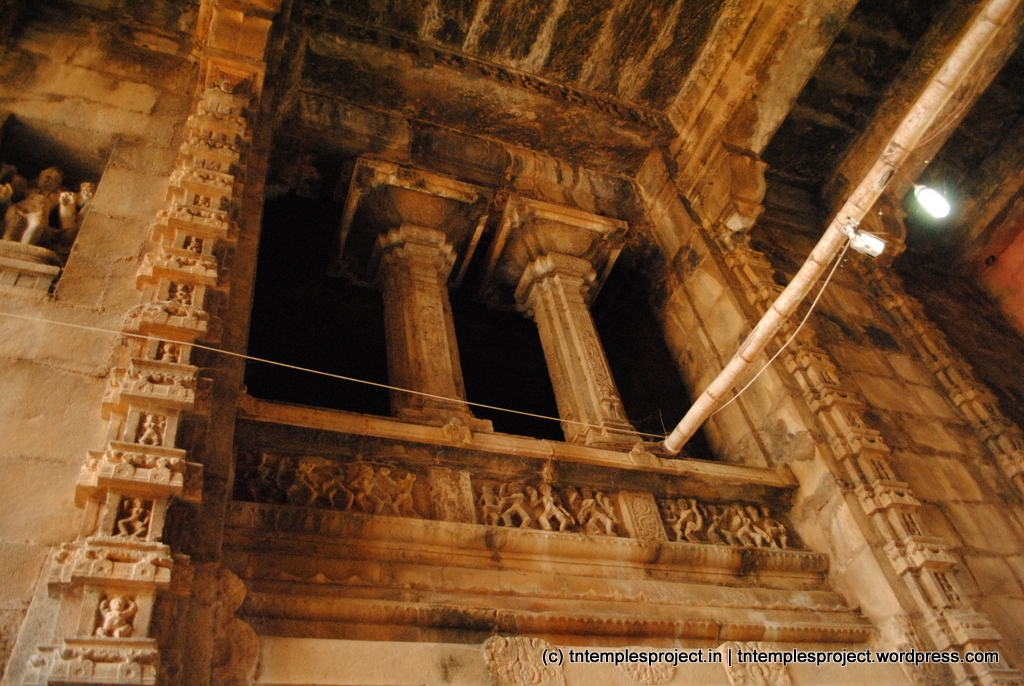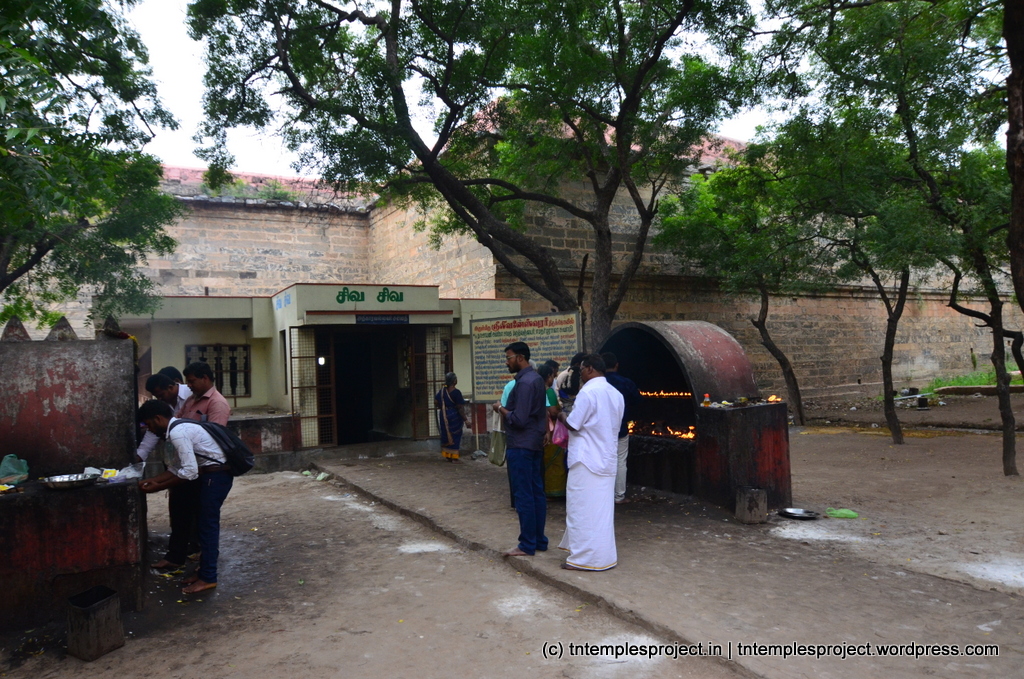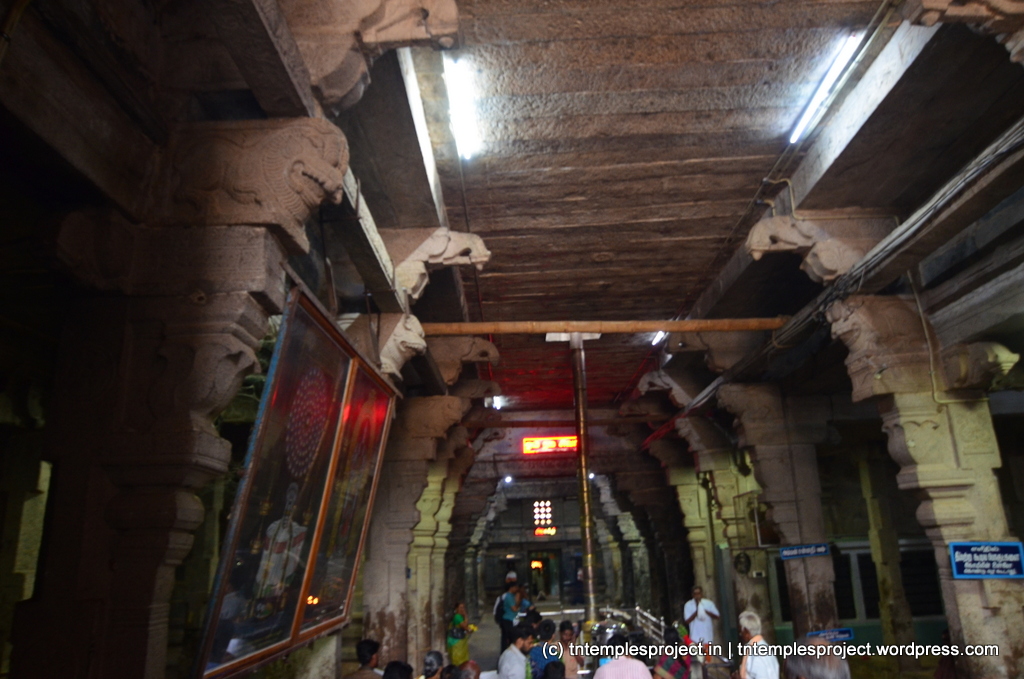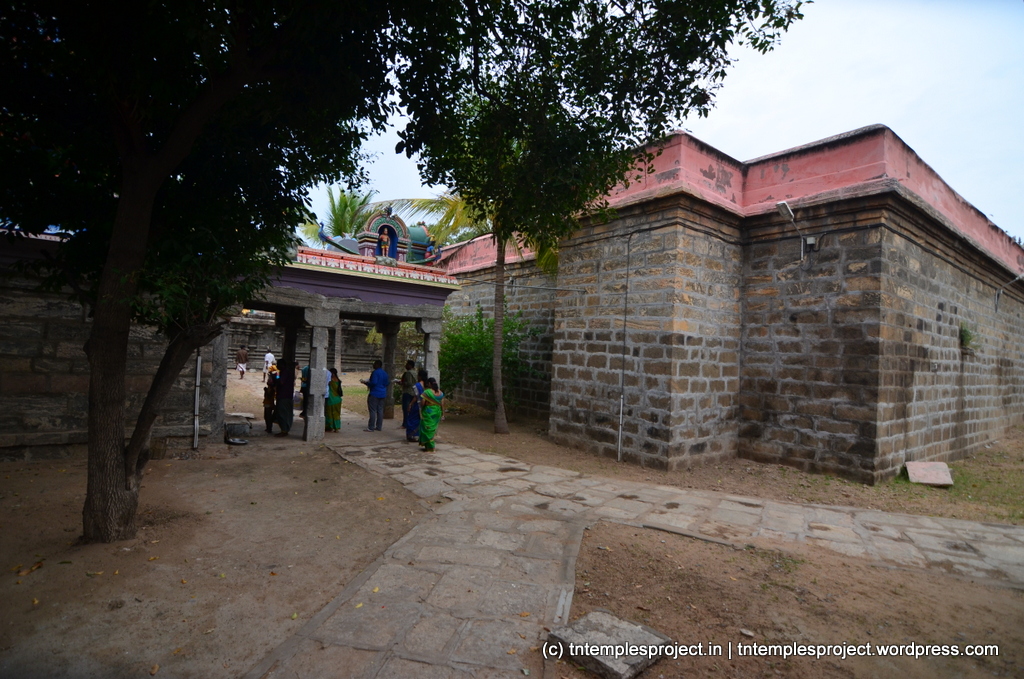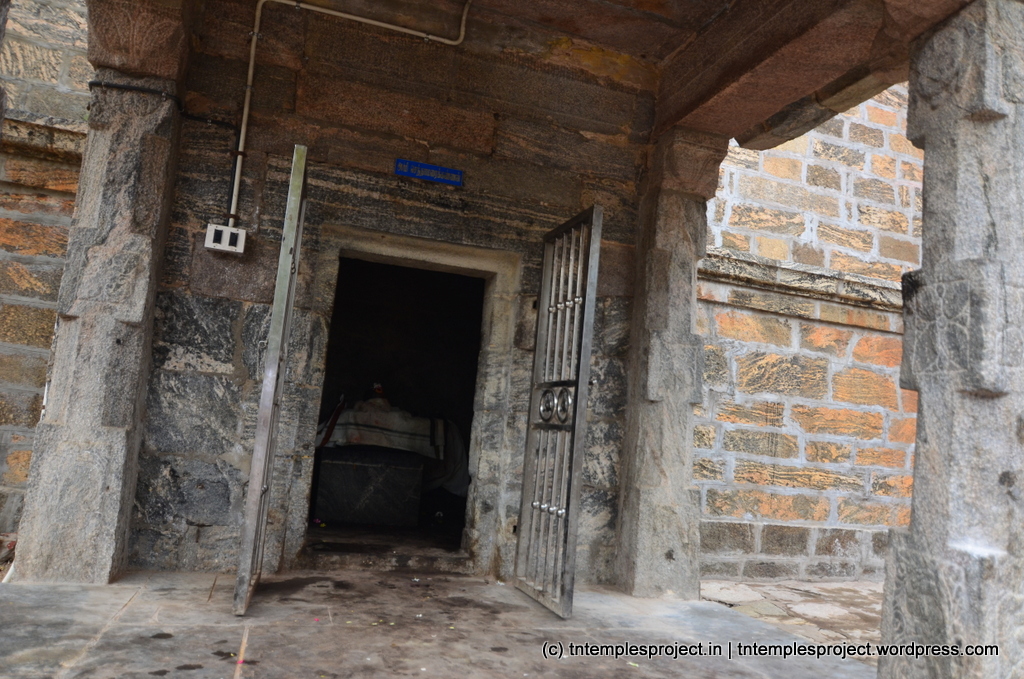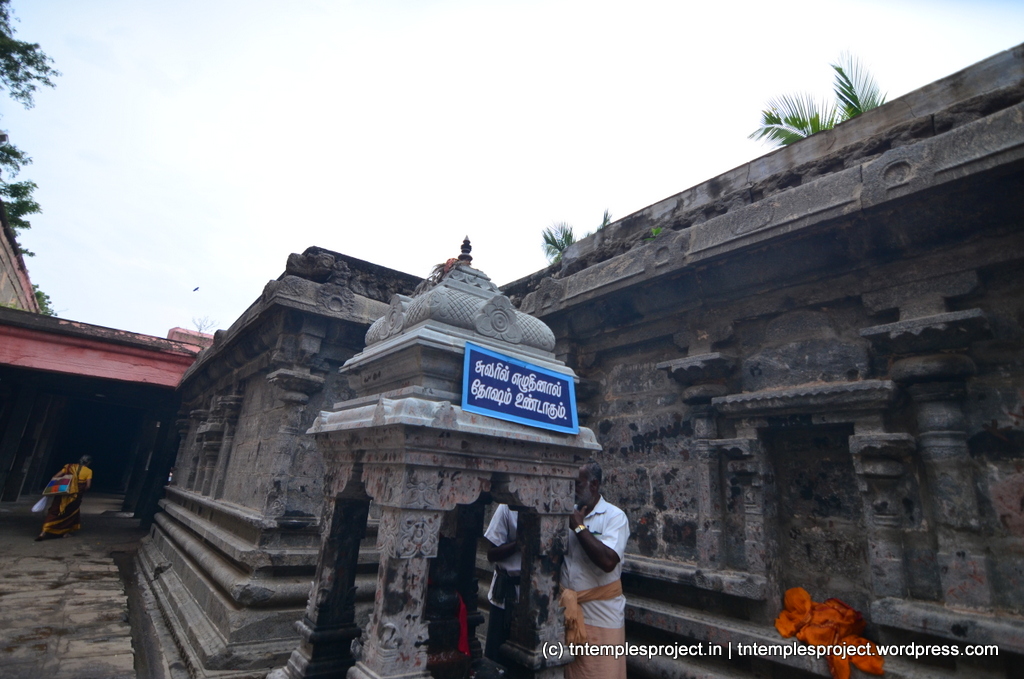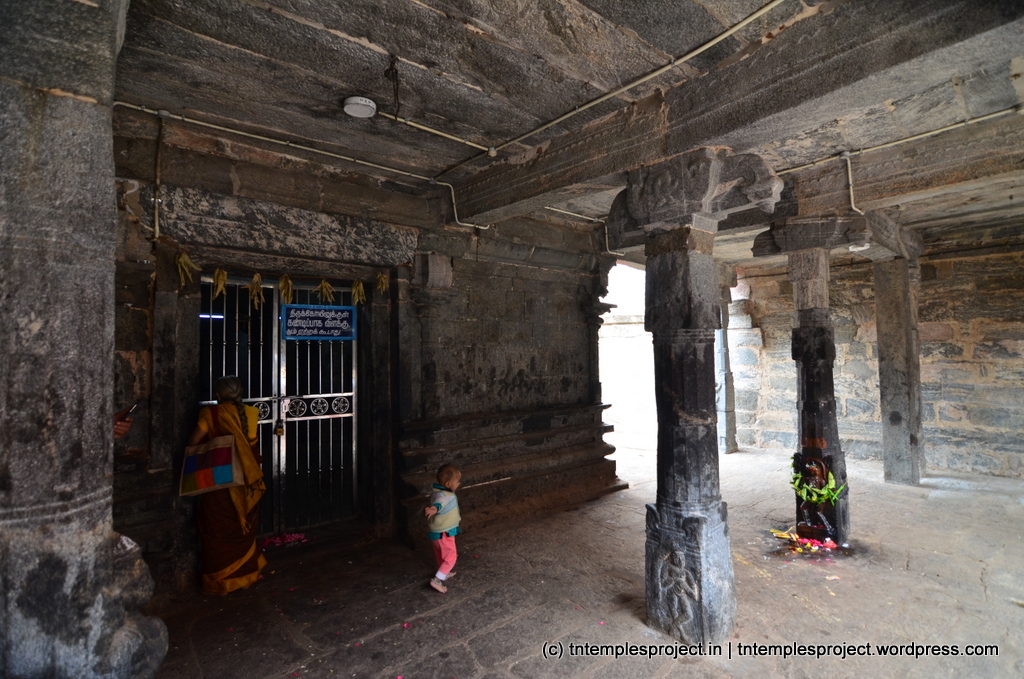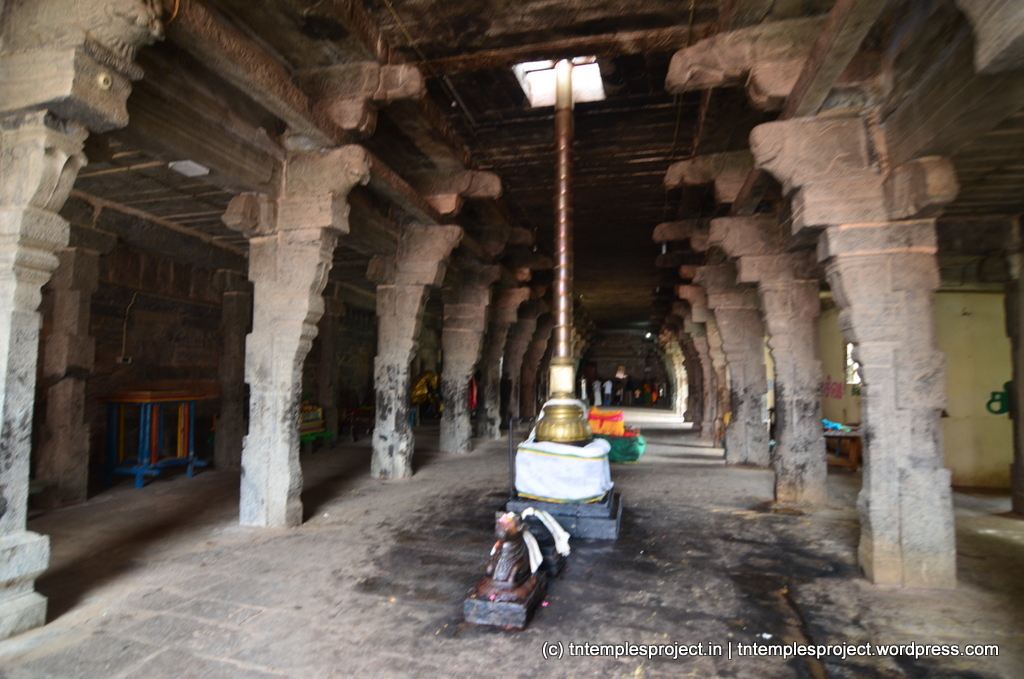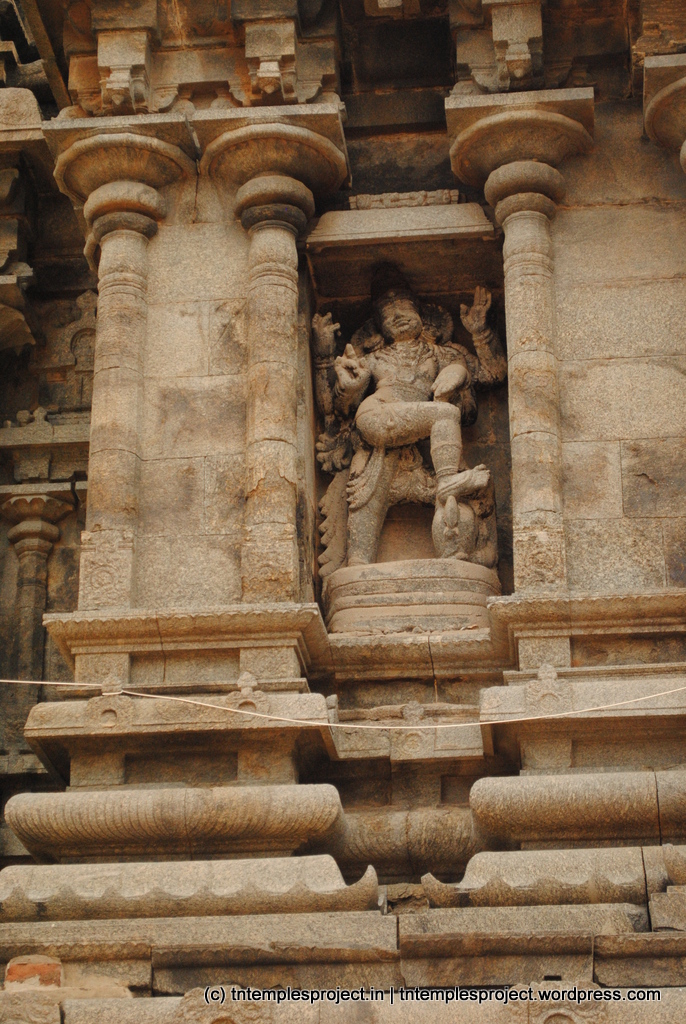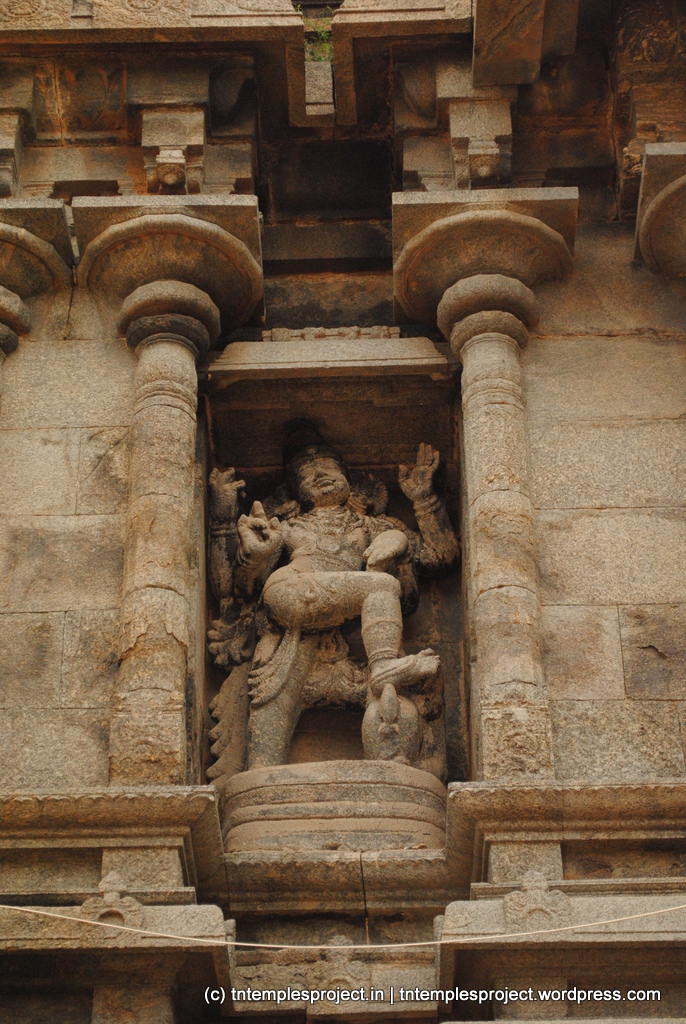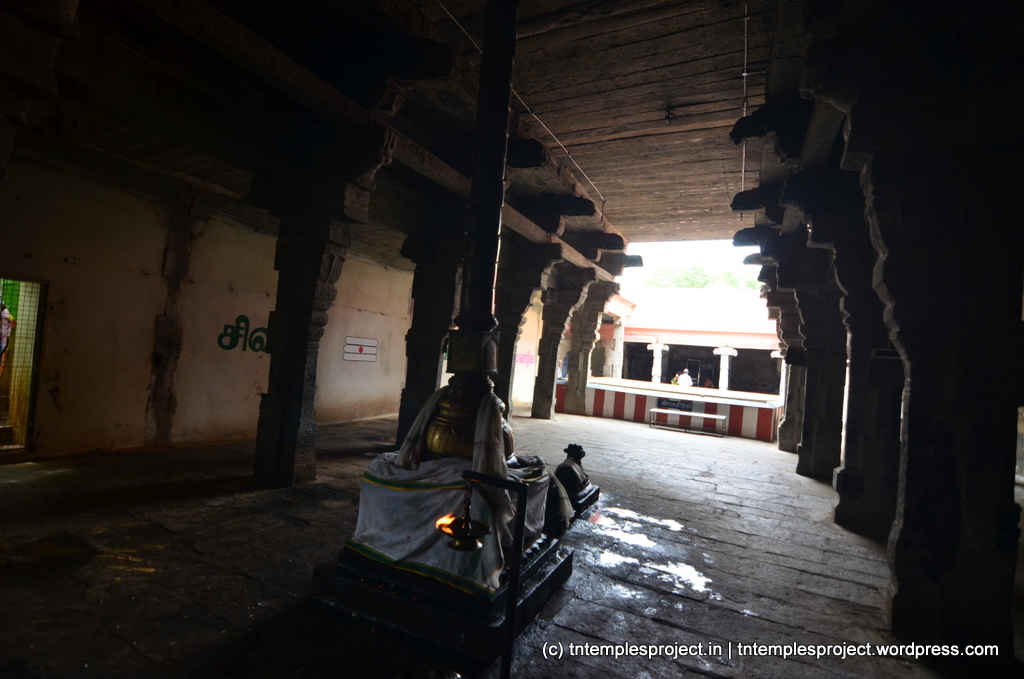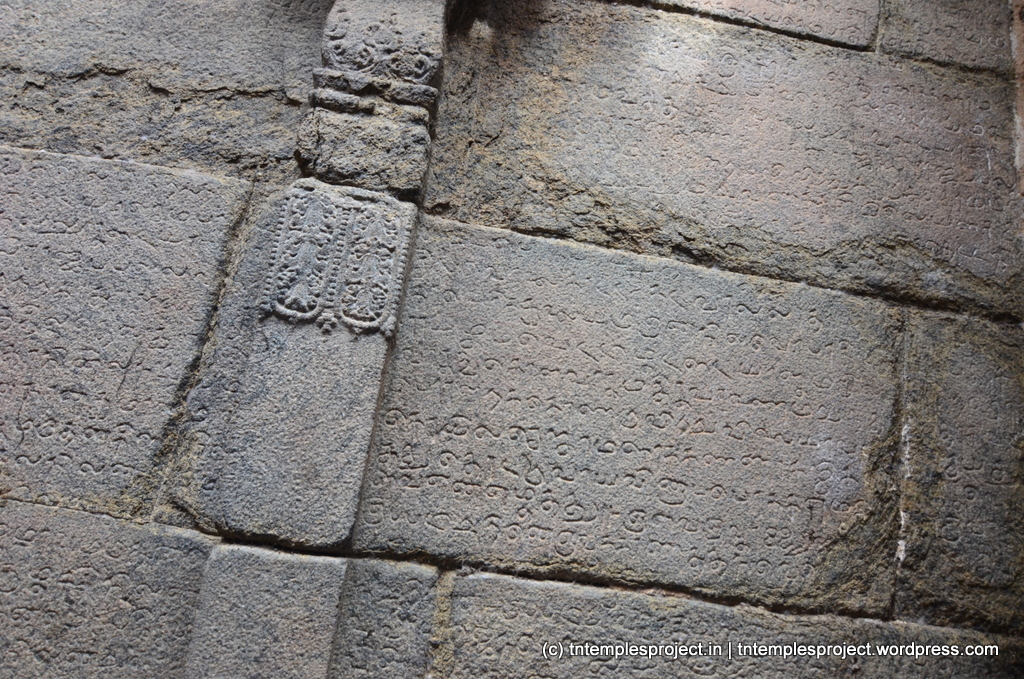Basic information about the temple
| Moolavar: | Gneeli Vaneswarar | Ambal / Thayar: | Visalakshi |
| Deity: | Siva | Historical name: | Tiruppaigneeli |
| Vriksham: | Gneeli Vaazhai | Teertham: | Appar Teertham |
| Agamam: | Age (years): | Timing: | 6 to 12.30 & 4 to 8 | Parikaram: |
| Temple group: | Paadal Petra Sthalam (Kaveri Vada Karai) | – | |
| Sung by: | Temple set: | ||
| Navagraham: | Nakshatram: | ||
| City / town: | Tirupaigneeli | District: | Tiruchirappalli |
| Maps from (click): | Current location | Tiruchirappalli (20 km) | Perambalur (53 km) |
| Ariyalur (65 km) | Thanjavur (71 km) |
Location
Sthala puranam and temple information

At Tirukadaiyur, Siva overcame Yama, and took away his powers of overseeing the death and dissolution of beings. This led to overpopulation, as there were only new births, and people stopped worshipping at temples except at this place. This resulted in an imbalance which Bhudevi was unable to bear, due to the increasing weight of the earth. Led by Vishnu, the Devas pleaded with Siva to resurrect Yama, so that he could carry on with his duties. So Siva brought back Yama through a hole in the ground (pila dwaram in Tamil) at this place, on the day of Thai Poosam. Pujas for longevity, as well as sashtiabdhapoorthi and satabhishekam pujas are performed at this shrine.
Gneeli refers to a type of plantain, and this place used to be a forest of such trees, giving the place and the Lord their names. The gneeli tree has been rarely found outside of this area. In addition, Siva here has a total of 43 names, including Kadhalivasanthar, Neelakantar, Aranyavitankar, etc. One of the Tamil names of Siva here is Adhikara Vallar, representing his power over even Yama.
During a fight between Adiseshan and Vayu over who could move Kailasam, a small part of the mountain broken into eight pieces, which fell in this region. These places are Tirukonamalai (Trincomalee in Sri Lanka), Kalahasti, Uchiramalai (the rock fort in Trichy and home of the Uchchi Pillaiyar and Thayumanava Swamy temple), Eengoimalai, Ayyarmalai, Neerthagiri, Rajatagiri and Swetagiri (this place, Tirupaigneeli). So this place is also called Then-Kailasam (south Kailasam).
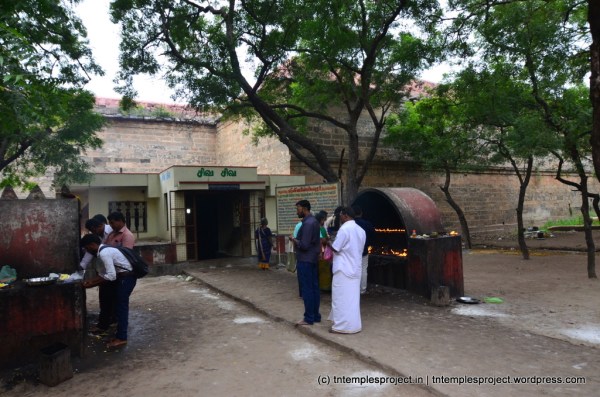
Appar, the Saivite saint, was worshipping Siva at various temples, and as he came by this side, he was exhausted. Siva approached him in the guies of a brahmin, and asked him where he was going. When Appar replied that he was going to worship Gneelivaneswarar, the brahmin told him that he too was a devotee of that deity, and offered Appar various mixed rice items, which Appar ate. After this, the two left for the temple, but as soon as they reached there, the brahmin disappeared, and Siva and Parvati was seen instead, on the Rishabha Vahanam, granting darsanam to Appar. Because Siva gave food to Appar, He is called Sorudaiya Easwarar. This event is celebrated annually on Avittam nakshatram in the Tamil month of Chithirai (April-May).
When Sage Vasishta came to know that Vyaghrapada and Patanjali had a vision of Siva’s tandavam at Chidambaram, he too requested the Lord for an opportunity to witness His cosmic dance. The Lord asked him to go to Tirupaigneeli, and blessed him with a performance of Tandavam here. So this place is also referred to as Mela Chidambaram (being upstream of the Kaveri river, from Chidambaram). This temple also has a Ratna Sabhai. In the Ramayanam, Rama also worshipped here at the advice of sage Vasishta.
Although there are inscriptions in the temple belonging to the Chola period, from the time of Raja Raja Chola I and Rajendra Chola I, it is believed that the temple (or perhaps just the Adhikara Vallar shrine?) was built by the Pallava king Mahendravarman I in the mid 7th century. The mottai gopuram was constructed by the Pandya king Sundara Pandyan, in the 13th century.
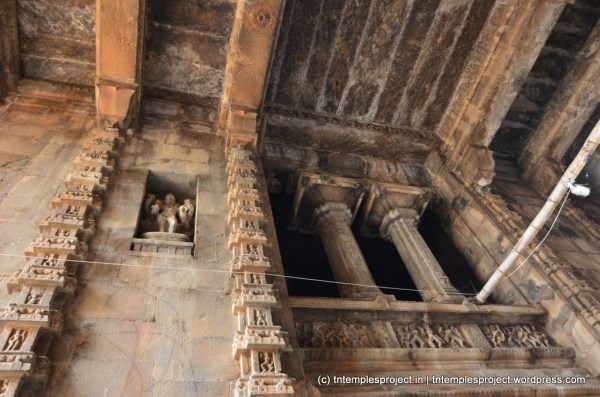
The temple features a mottai gopuram replete with sculptures, at the very entrance, and the architecture work is also extensive, inside the temple. The temple has two Amman shrines. There is a separate shrine for Vishnu as Senthamarai Kannai (the lotus-eyed one), who succeeded in getting Siva to resurrect Yama. There is no separate Navagraham shrine as this temple, as Siva and Yama are considered their Adipathis (another puranam says that the Navagrahams were devoted to Ravana); the nine steps from the second gopuram (leading to the inner precincts) are considered the Navagrahams. Interestingly, the second gopuram is called Ravanan Vayil (Ravana’s gate), honouring one of Siva’s greatest devotees.
On the southern side of the temple precincts, there is a separate basement-level shrine for Siva as Adhikara Vallar, along with Parvati and Murugan (Somaskandar form). At this shrine, a newly-resurrected Yama is depicted as a small child at Siva’s feet. Suryan and Chandran are seen fanning the Lord with chamarams. It is the devotees’ belief that those worshipping here are freed from the fear of death.
The sapta kannikas (seven celestial virgins) were to be married, and worshipped Parvati, who blessed them with a happy marriage, and promised them that they would live in a place of plantain trees where Parvati would give them darshanam every day. So the sapta kannikas came here, and the temple is a prarthana sthalam for marriages. Special pujas take place on Fridays and Sundays, including by people of other denominations, such as Christians and Muslims.
There are seven temples connected to Tiruvanaikkaa, called the Sapta Sthanam temples. This temple is one of them.
Other information for your visit
The temple is located a bit outside of Trichy, but the following important temples are relatively close by, and all of them can be visited in a single day:
- Divya Desam temples:
Pundarikaksha Perumal, Tiruvellarai, Tiruchirappalli
Purushottama Perumal, Uttamar Koil, Tiruchirappalli
- Paadal Petra Sthalam:
Maatruraivaradeeswarar, Tiruvasi, Tiruchirappalli
- Others:
Prasanna Venkatachalapati, Gunaseelam, Tiruchirappalli
AadiNarayana Perumal, Gopurapatti, Tiruchirappalli
Sundararaja Perumal, Palayanallur, Tiruchirappalli
Amaleeswarar, Gopurapatti, Tiruchirappalli
Bhoominathar, Mannachanallur, Tiruchirappalli
Matsyapureeswarar, Thudaiyur, Tiruchirappalli
Vishamangaleswarar, Thudaiyur, Tiruchirappalli
Pancha Mukha Vinayakar, Pichandarkovil, Tiruchirappalli
Contact
Phone: 97901 07474
Gallery

